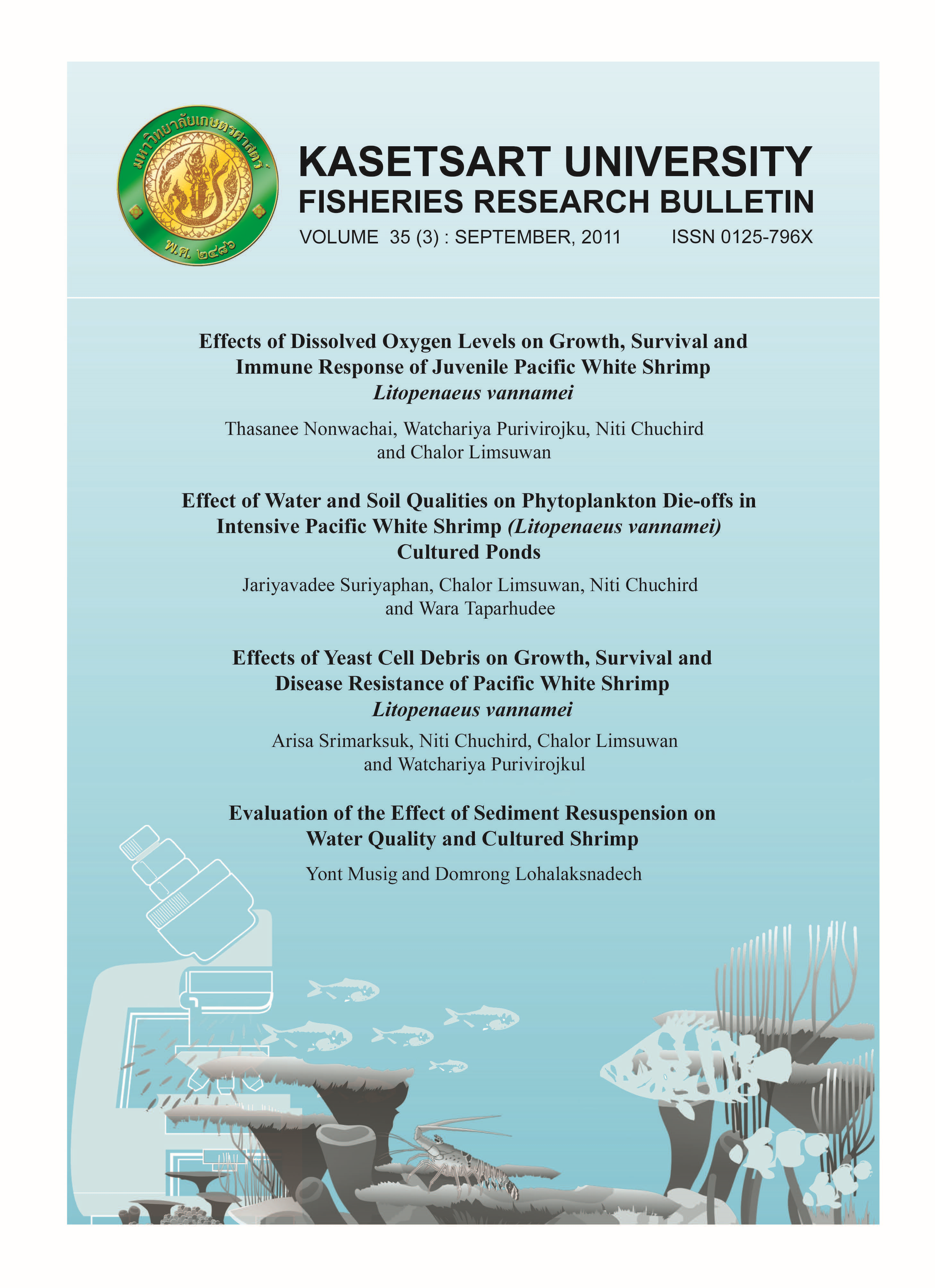Effect of Water and Soil Qualities on Phytoplankton Die-offs in Intensive Pacific White Shrimp (Litopenaeus vannamei) Cultured Ponds
Main Article Content
Abstract
The study is focused on the effect of water and soil qualities on phytoplankton die-offs in intensive Pacific white shrimp cultured ponds. Six earthen ponds (8,000 m2/pond ) were used for rearing Litopenaeus vannamei at the stocking density of 113 PL/m2. The experimental ponds were divided into two groups. First group consisted of three ponds which had unstable phytoplankton bloom from previous crop. Second group consisted of three ponds which had more stable phytoplankton community from previous crop. The water color shades were recorded throughout the culture period. Phytoplankton and water quality samples were collected every 7-10 days while soil samples were collected at feeding area every month until shrimp were harvested. Water coloration with light to light green were observed during water preparation before stocking postlarval shrimp and gradually changed to yellowish green and greenish brown after stocking. Greenish brown and yellowish green shades were the most common color shades observed during the culture period. After phytoplankton die-offs the coloration changed to dark green. Brown to dark brown color was observed prior to harvesting. Cyanophyceae, Chlorophyceae, Chromophyceae and Dinophyceae were the common groups of phytoplankton found in all experimental ponds. Average number of phytoplankton from six experimental ponds ranged between 5.5 ±6.4 ×104 to 2.2 ±2.8 ×105unit cell/land related with pH, DO and total phosphorus in the pond water but not correlated with soil quality. Statistical analysis compared between stable color ponds and unstable color ponds showed that the density of phytoplankton in the unstable water color ponds (9.2±5.9×104 unit cell/l) was significantly lower than the stable water color ponds (1.6±1.0×105 unit cell/l). Water pH and total phosphorus were significantly different between the groups (P<0.05). Unstable water color ponds had pH of 7.9±0.1 lower than the stable water color ponds of 8.0±0.1. Total phosphorus in unstable water color ponds (0.7±0.4 mg/l) was higher than the stable water color ponds (0.4±0.2 mg/l). Furthermore, total phosphorus was higher than 0.5 mg/l significantly decreased phytoplankton number. Water pH and total organic matter in soils were significantly different between treatments (P<0.05). The soil pH from unstable water color ponds (6.6±0.1) was lower than stable water color ponds (7.7±0.1) while an average of total organic matter from unstable water color ponds (2.8±0.87%) was higher than the stable water color ponds (2.2±0.59%). The average production, body weight and growth rate from stable color ponds were significantly different than the unstable water color ponds. However, survival rate and FCR from both groups were not significant different.


